Have you ever tried a mung bean dessert? Gluten-free Mung Bean Daifuku Mochi is a traditional Japanese sweet (wagashi). This soft and billowy mochi confection is stuffed with a sweet mung bean paste for the perfect teatime treat.
With only 5 minutes in the microwave, you can make tender chewy mochi (Japanese rice cakes). The Instant Pot (pressure cooker) cooks the green mung beans in flash without any soaking required - so you can make a delicious paste. We bet you can't eat just one of these vegan bite sized mung bean sweets.
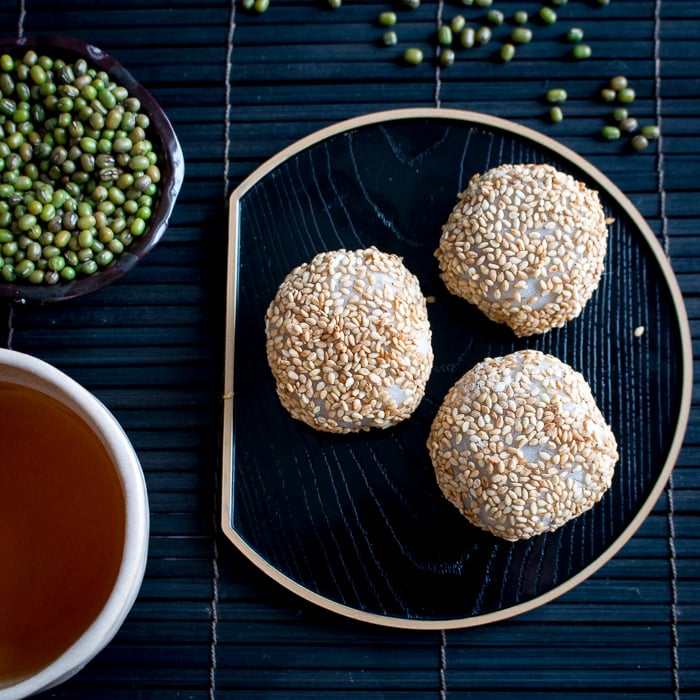
Jump to:
What's to Love
One bite of Mung Bean Daifuku Mochi and you will be hooked. These are the perfect little treats to enjoy with tea and friends. Today we served them with a little matcha (green tea) latte. You are just going to love that tender and delicately sweet thin mochi layer and then the creamy sweet mung bean inside.
We are huge mochi fans! Its not just the flavor but its that addictive chewy texture that keeps you wanting more. Have you ever tried the soft billowy texture of daifuku mochi? It's quite a contrast from the chewy but tender texture of our Baked Black Sesame Mochi Donuts or even crisp an chewy texture of Isobeyaki mochi.
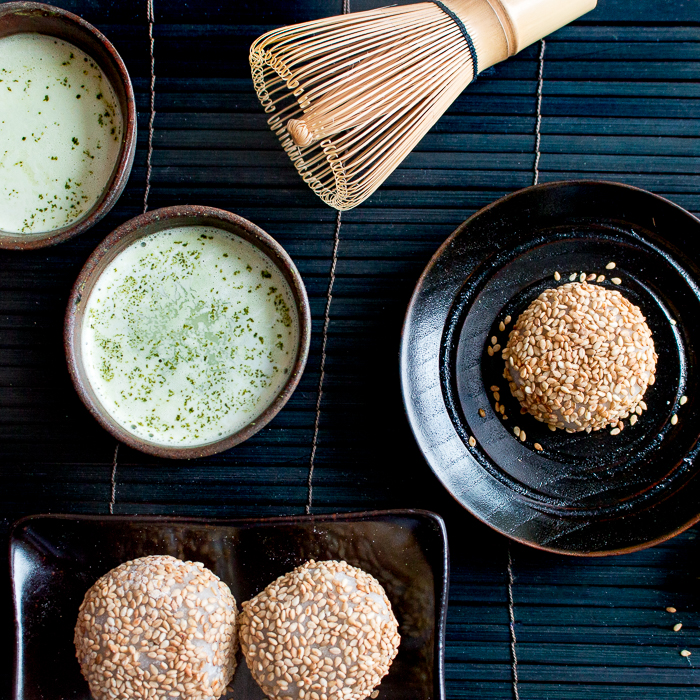
What is Glutinous Rice Flour?
The white mochi layer is made with sweet glutinous rice flour which is made for mochigome which is short-grain glutinous rice. It gets very sticky and chewy when cooked. You can find sweet glutinous rice flour in many stores including Target, Walmart’s, Amazon and in an Asian grocery market.
Please note that there is very distinct difference between plain rice flour and sweet glutinous rice flour. They are not the same. You must look for sweet glutinous rice flour, like we used in our Sweet Sticky Rice Chinese New Year Cakes, or otherwise your recipe will not turn out correctly.
Even though the word “Glutinous” rice flour sounds like it has gluten in it, it is gluten free. The word glutinous refers to how the rice becomes sticky when wet ingredients are added to it.
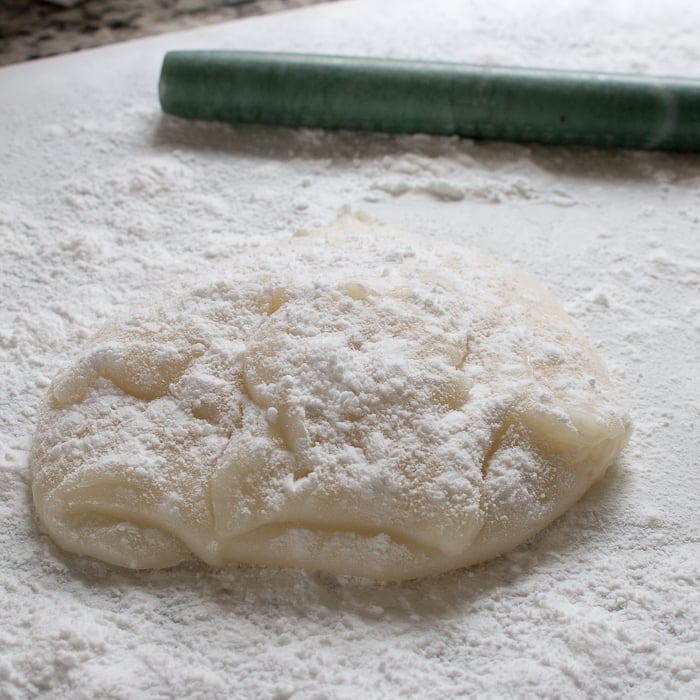
Celebrating Hanami
Did you know that the word "Daifuku" means good luck? With spring is on the horizon, our thoughts are on warmer weather, new beginnings and new growth.
In addition matcha is harvested in the spring and just in time to enjoy the sakura (cherry blossom) blooms and hanami (viewing of the sakura- cherry blossoms). If you have not tried our Sakura Shortbread Matcha Cookies or Chocolate Matcha Crispy Truffles, you have no idea what you have been missing out on.
It is always nice to share a little treat with your tea. Mung Bean Daifuku Mochi is the perfect pairing. If you are looking for other delicious treats to enjoy during Sakura (Cherry blossom) season be sure to try our Matcha Red Bean Energy Balls, Baked Matcha Lemon Glazed Donuts , or our Matcha White Chocolate Brownies.
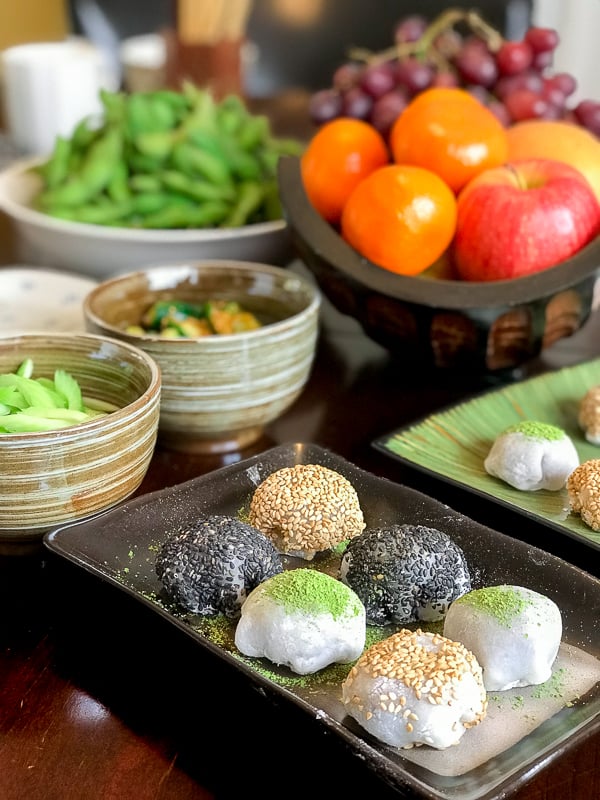
Mochi Flavors and Fillings
Daifuku Mochi is traditionally stuffed with adzuki (sweet red bean paste) just like our Homemade Snowy Moon Cakes. However, they can also be made with ice cream in the center, strawberries and cream, sweet potato and many other delicious fillings.

Toppings
We topped our mung bean dessert with both toasted black and white sesame seeds and topped some with a little dusting of matcha (green tea) powder. You can also serve them plain without any toppings and this is up to you.
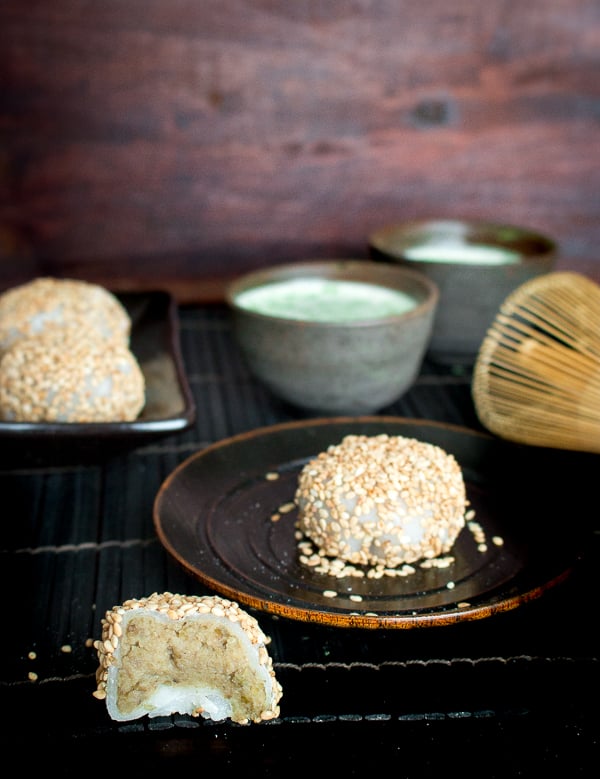
How to Make Mung Bean Paste?
Dried Mung Beans are also called green gram, moong, maash, monggo and munggo. Mung beans are a member of the legume family and can be eaten either savory or sweet.
We used the pressure cooker (Instant Pot) to cook the mung beans to make the sweet mung bean paste .
- The ratio is 1 cup of green mung beans to 3 cups water and a dash of salt.
- High pressure on the pressure cooker for 5 minutes and then a 10 minute natural release. Then, a quick release for perfectly mushy mung beans. Drain excess water.
- Add sugar and pulverize with a food processor to a smooth paste.
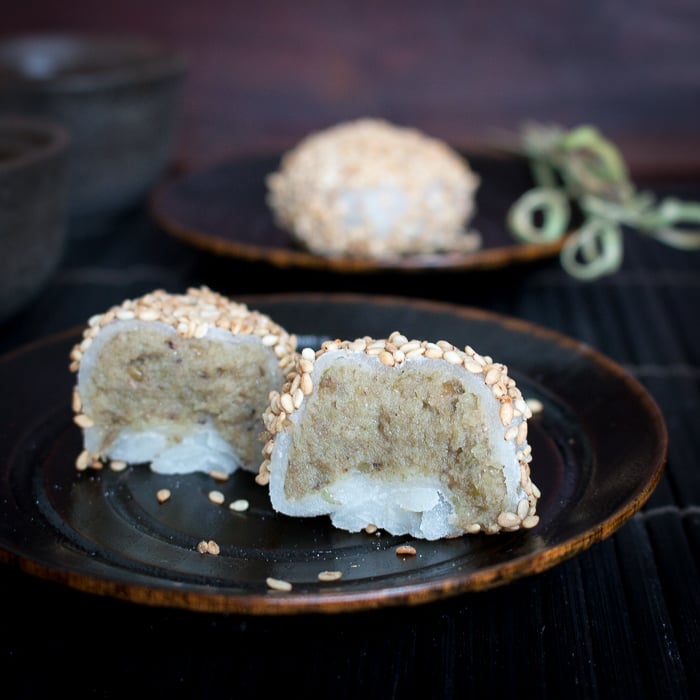
Traditional Chinese Medicine
According to Traditional Chinese Medicine (TCM), mung beans clear heat and toxins from the body, balance the organs and skin, and tonify Qi. Mung beans can also improve circulation throughout the twelve channels of the body and are good for cardiac and circulatory health.
During the hot spring and summer months, eating mung beans can help prevent summer heat stroke. Have you ever eaten a mung bean ice lolly or mung bean dessert soup before?
If you have a cold constitution of always having cold hands and feet or diarrhea it is best not to eat too much of mung beans as they are very cooling. Please refer to our article The Five Energies of Food to learn more about this concept.
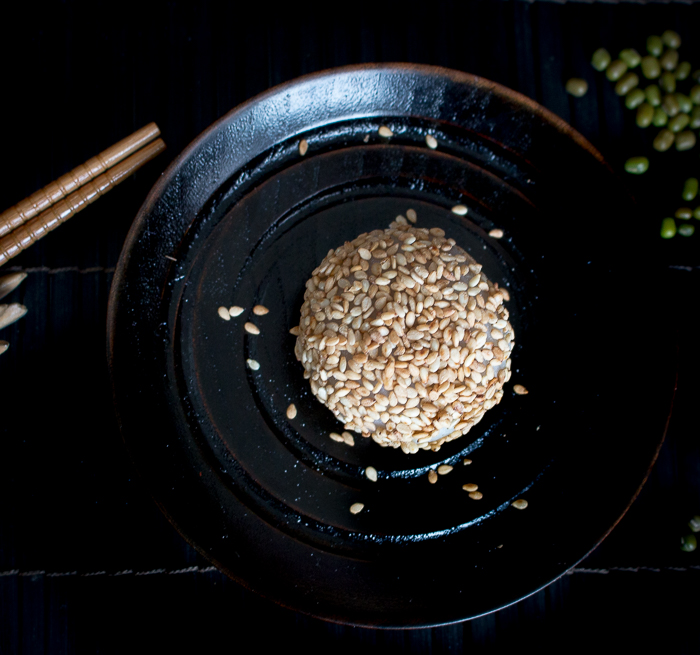
Step by Step
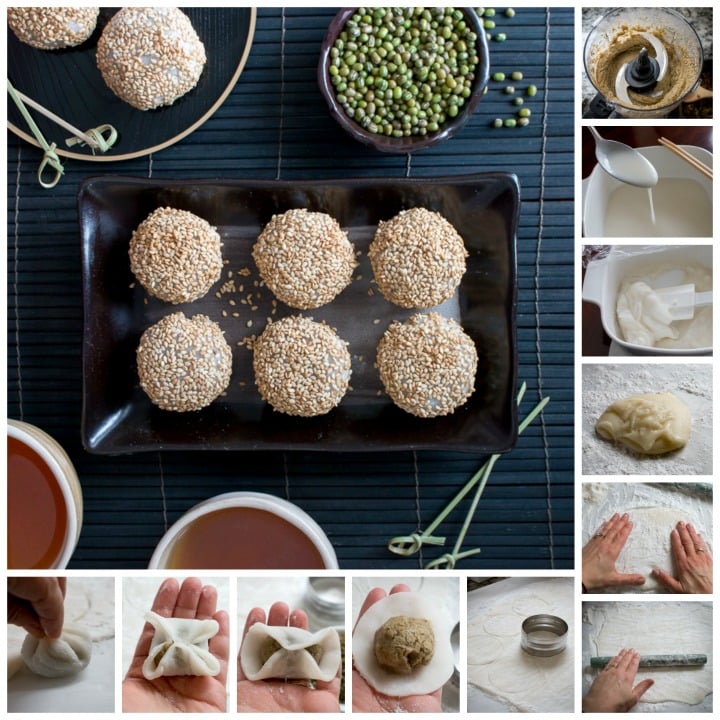
Recipe Tips
- Mochi sticks to everything like your hands, rolling pins, board and utensils so dust everything well with potato starch so it does not stick.
- Soak anything that was used to prepare mochi immediately unless you enjoy scrubbing dishes. (You can thank us later)
- The microwave oven version of preparing mochi is about 100 times easier than the steaming method.
- Caution: The dish that you microwaved the mochi in gets hot. Use hot pads when transferring out of oven and pouring.
- Parchment paper is your friend when preparing mochi to prevent sticking.
- You can use a cup or anything round to cut the mochi into circles to prepare to stuff. We used round cookie cutters.
- Roll out the mochi about ⅛ inch thick. We do not like it too thick.
- Practice makes perfect so don’t be too hard on yourself with the first couple of ones you shape. The first couple Mung Bean Daifuku Mochi we usually eat- the bonus of being the cook.
- Keep your fingers well-floured in potato starch when shaping and pinching.
- We like to keep our mung bean daifuku mochi in the freezer because we have no self-control and don’t want to eat the whole batch in one sitting. We just take out a few for a couple of minutes when we are ready to enjoy.
Yes, you can freeze daifuku mochi stuffed with sweet mung bean paste or adzuki bean paste for up to 1 months. When you are ready to eat, just remove from the freezer for 15 minutes to thaw and enjoy. We do not suggest freezing daifuki mochi made with fresh strawberries and cream as the strawberries will get soggy.
Daifuku mochi is best eaten the same day it is made. However you can store it in the refrigerator in a sealed container for up to 2 to 3 days.
More Delicious Japanese Treats
Matcha Baked Lemon Glazed Donuts
Did You Like Our Recipe? Leave a ⭐⭐⭐⭐⭐ rating and/or a review in the comments section below. Your feedback is always appreciated! Follow us for more delicious recipes on Pinterest, Instagram, Twitter and Facebook! Don't forget to sign up for our email list for more free recipes.
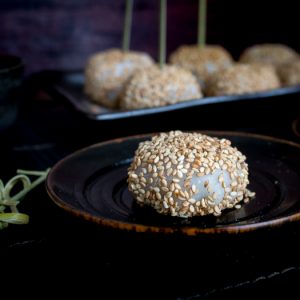
Mung Bean Daifuku Mochi
Equipment
- Pressure cooker (Instant Pot)
- Microwave
Ingredients
Mung Bean Paste
- 200 grams mung beans
1 cup dried - 3 cups water
- 200 grams granulated sugar
1 cup - salt pinch
Mochi Ingredients
- 100 grams glutinous rice flour
¾ cup (sweet Rice Flour) - 180 ml water
¾ cup - 50 grams granulated sugar
¼ cup - 100 grams potato starch ½ cup (can substitute with corn starch)
- 1.5 cups mung bean paste
(or adzuki red bean paste if you prefer) recipe below - ½ cup sesame seeds
toasted - optional
Instructions
Mung Bean Paste
- Add 1 cup of green mung beans to 3 cups water and a dash of salt into the pressure cooker and seal. Set to high pressure for 5 minutes.
- Allow the pressure cooker to natural release for 10 minutes and then do a safe quick release.
- Drain any excess water. Allow the mung beans to cool- we popped ours in the freezer for a couple of minutes to expedite the cooling process. Add the cooked mung beans to the food processor along with the sugar and blend until smooth. Set aside.
Mochi
- Combine glutinous rice flour and sugar in a medium bowl.
- Add water to the flour and sugar mixture and mix well.
- Cover the bowl loosely with plastic wrap. Put the bowl in the microwave and heat it on high heat for 1 minute. Take it out and stir with spatula. Cover again and cook for 1 minute. Stir again, cover, and cook for 30 seconds to finish cooking. With each session in the microwave the mochi will get firmer and lighter in color.
- Put a piece of waxed paper/ parchment paper down on the counter and sprinkle it with ample potato starch to prevent the mochi from sticking. Cover the work surface with parchment paper dust it generously with potato starch. Transfer the mocha on to your potato starch dusted surface and then sprinkle more potato starch on top. Let it cool for about 5 minutes. (Immediately get that bowl soaking in warm water! You can thank us later that we reminded you to do that, unless you enjoy scrubbing dishes)
- Spread the mochi into a thin layer (about 1/16th of an inch) with a well potato starched rolling pin. (Mochi sticks to everything so make sure you dust everything including your hands with potato starch)
- Transfer the mochi with parchment paper onto a large baking sheet. Refrigerate for 15 minutes until the mochi is set. This makes it easier to cut and shape.
Assembly
- Remove the mochi from the refrigerator. Cut out circles with a circle cookie cutter. Our cookie cutter was 7.6 cm (3 inches)
- Dust off the excess potato starch with a brush. Place pieces of parchment paper/plastic wrap between mochi layers and stack them out of the way to finish rolling and cutting out the rest of your mochi. This recipe makes about 10-12 wrappers.
- If you wish to coat the outside of your Daifuku mochi with sesame seeds. Gently slightly dampen one side of the mocha wrapper with a small amount of water and then dip that side only into toasted sesame seeds. (You can skip this step if you want your daifuku mochi plain.
- Place one tablespoon of prepared mung bean bean paste (or adzuki red bean paste) into the center and plain skin side section of the mochi wrapper. Pinch the 2 edges together and then the other 2 edges together four corners of the mochi to cover the mung bean paste. Use your fingers to pinch the remaining mochi around the mung bean paste so that it is formed into a circle and no mung bean paste is showing.
- Put some potato starch on the sealed area and set aside just so that it does not stick. Repeat process for the remaining mung bean Daifuku mochi. Enjoy!
Storage
- You can store in the refrigerator for up to 2 days or freeze up to 1 month. We love Mung Bean Daifuku Mochi a little frozen. We just take out a few out of the freezer maybe 15 minutes before ready to serve and then they are perfectly delicious.
Notes
- Mochi sticks to everything like your hands, rolling pins, board and utensils so dust everything well with potato starch so it does not stick.
- Soak anything that was used to prepare mochi immediately unless you enjoy scrubbing dishes. (You can thank us later)
- The microwave oven version of preparing mochi is about 100 times easier than the steaming method.
- Caution: The dish that you microwaved the mochi in gets hot. Use hot pads when transferring out of oven and pouring.
- Parchment paper is your friend when preparing mochi to prevent sticking.
- You can use a cup or anything round to cut the mochi into circles to prepare to stuff. We used round cookie cutters.
- Roll out the mochi about ⅛ inch thick. We do not like it too thick.
- Practice makes perfect so don’t be too hard on yourself with the first couple of ones you shape. The first couple Mung Bean Daifuku Mochi we usually eat- the bonus of being the cook.
- Keep your fingers well-floured in potato starch when shaping and pinching.
- We like to keep our mung bean dessert in the freezer because we have no self-control and don’t want to eat the whole batch in one sitting. We just take out a few for a couple of minutes when we are ready to enjoy.



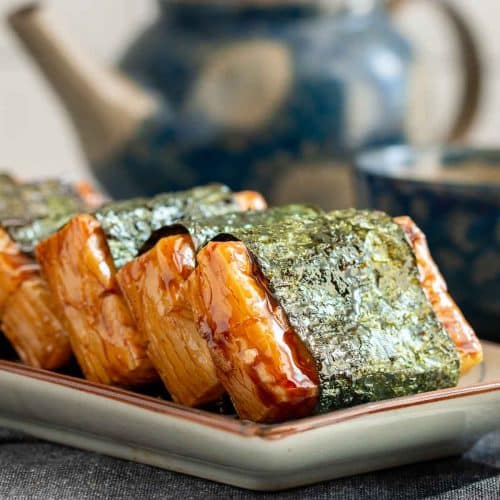
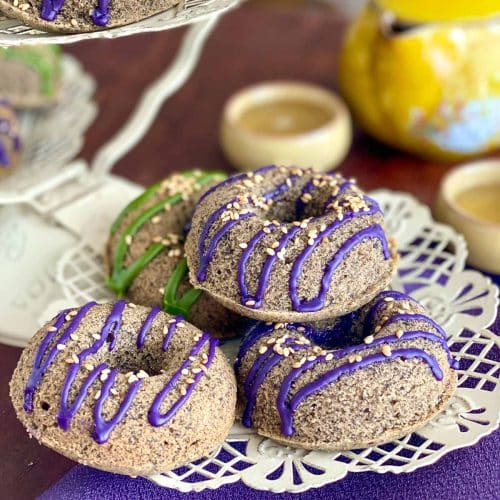

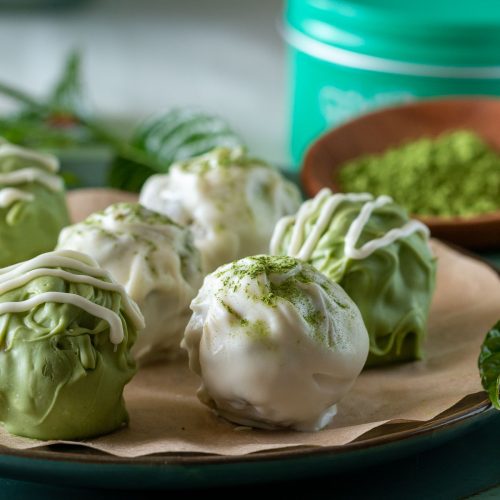


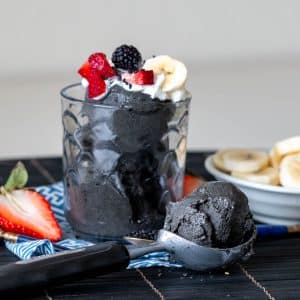
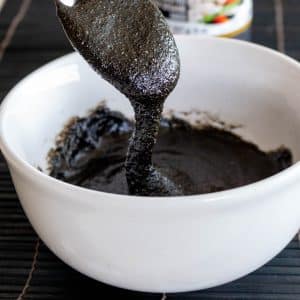

Eha says
Bobbi - on this very different Saturday morning you are taking me back to cherry-blossom time in Japan . . . we always tried to book our early-year business trips to Tokyo when sakura time was heralding spring . . . and could not wait to get our drivers to head towards Lake Hakone just to stand among the trees and be glad to be alive . . . Your mung bean mochi look beautiful. Must really get my act together and now that on-line grocery shopping is normalizing . . . perchance I should reacquaint myself with those delightfully different bites. As our very strict regimens are thankfully paying dividends I look with sadness at what is happening your way . . . I understand the frustrations but why are folk making matters worse for themselves . . . thinking of you . . .
HWC Magazine says
Thank you dear Eha! When we can't change the world around us, we take to changing the things or our attitude about things we can change. We head to the kitchen for peace and tranquility. Enjoying Hanami is such a breath taking beautiful site. This year the cherry blossoms are still blooming but you can only enjoy it from afar... The process of making daifuku is very therapeutic and sets your mind at ease. Enjoying mung bean daifuku with a cup of matcha in silence is very calming, tranquil and a moment of zen for all. We hope that now that the shopping experience is lightening up you can enjoy these delicately sweet treats soon. Stay well and take care